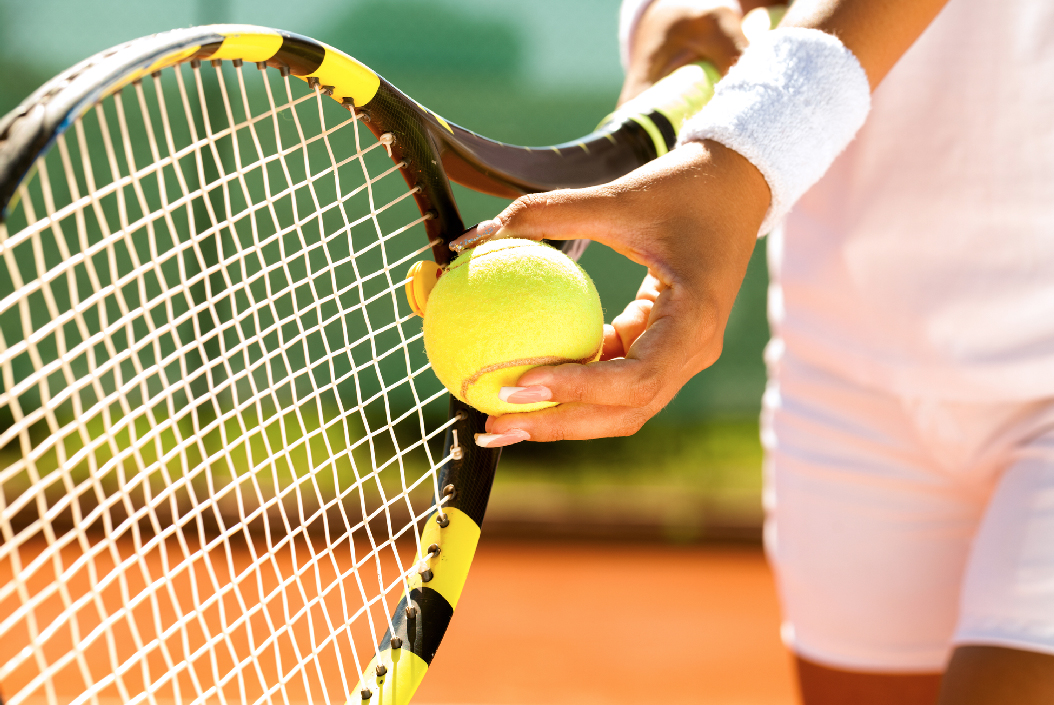Learning how to play tennis, a sport cherished worldwide and often referred to as lawn tennis, offers both a physical challenge and a unique blend of tactical gameplay. This globally renowned sport transcends age and skill, making it a favorite for both casual players and professional athletes alike. Originating in late 19th century England, tennis has evolved from a leisurely lawn activity to a dynamic game characterized by fierce competitions like Wimbledon, the U.S. Open, and other Grand Slams.
The appeal of tennis lies in its simplicity and the minimal equipment required. At its core, tennis involves two or four players, a ball, and racquets.For beginners, the journey begins with grasping basic strokes—the forehand, backhand, volley, and serve—and the fundamental rules governing the game. Each match is a blend of physical prowess, strategic planning, and psychological endurance, making tennis not only a test of physical skills but also mental acuity. As players progress, they learn more about the intricacies of the game, including different playing surfaces, advanced shots, and tactical plays, enriching their playing experience and enhancing their love for the sport.
Whether you are aiming to play socially, seeking to improve your physical fitness, or aspiring to compete professionally, tennis offers a versatile and rewarding pathway. This guide aims to provide you with a comprehensive foundation in the basics of tennis, equipping you with the knowledge on how to play tennis and begin or enhance your tennis journey.
Grasping the Fundamentals of Tennis
Tennis, often referred to as lawn tennis, is a sport that seamlessly combines rigorous physical exertion with meticulous strategic planning. To embark on playing tennis, understanding its core principles and goals is crucial. The central aim of the sport is to strategically strike the ball over a net into the adversary’s court in a manner that prevents a valid return. Points are accumulated each time the opponent either fails to return the ball correctly or hits it beyond the court’s designated boundaries.
How does tennis operate? Tennis utilizes a unique scoring system that progresses from “love” (zero), through increments of 15 and 30, up to 40, culminating in a game point.
When it comes to equipment and understanding how to play tennis, specificity is key yet minimalism is maintained. Players are equipped with rackets, often crafted from advanced composites like graphite to ensure lightness and durability. The balls, coated in a distinctive fluorescent yellow felt, are designed to optimize visibility and aerodynamic properties. Footwear should provide robust support and traction, crucial for the rapid side-to-side movements characteristic of the sport. Clothing, too, should prioritize comfort and freedom of movement, incorporating materials that wick away sweat to keep players cool and comfortable.
Understanding the Tennis Court Layout
A standard tennis court is characterized by its firm, rectangular surface with precise dimensions that adhere to the official rules of tennis. The overall length of the court is 78 feet. The width of the court varies depending on the type of match being played: it measures 27 feet for singles matches and expands to 36 feet for doubles matches. This difference in width is due to the inclusion of the doubles alleys, which are the areas on either side of the court that come into play exclusively during doubles matches.
Central to the court’s layout is the net, which stretches across the full width of the court, effectively dividing it into two equal halves. The net stands 3.5 feet high at the posts and slightly dips to 3 feet at the center, ensuring a balanced and fair playing field. Parallel to each end of the net are the baselines, marking the court’s far boundaries. Players serve from behind these baselines, aiming to deliver the ball diagonally into the opponent’s service box.
Adjacent to the net, on either side, are the service boxes where serves must land. These boxes are formed by the service lines, which run 21 feet from the net, and the center service line that divides the service area into left and right sections. Between the service lines and the baselines lies an area colloquially known as “no man’s land,” a zone typically avoided during rallies due to its tactical disadvantage.
This layout not only defines the playing area but also influences game strategy, as players maneuver and target their shots within these defined spaces to gain a competitive advantage. Understanding this structure is crucial for both beginners and experienced players to effectively strategize and improve their game.
Understanding what are the rules of tennis can enhance your appreciation and performance in the game. By mastering these basic tennis rules, players can enjoy a structured, competitive, and fun experience on the court.

How to Serve in Tennis
Understanding tennis serving rules is crucial to mastering the game and learning how to play tennis effectively. A legal serve is the foundation of any successful tennis match. Here’s a step-by-step guide to executing a proper tennis serve, along with descriptions of different types of serves:
Step-by-Step Process for a Legal Tennis Serve
- Preparation:
- Stand behind the baseline, facing the net. Position your feet shoulder-width apart, with your non-dominant foot slightly forward.
- Hold the racket in your dominant hand and the tennis ball in your non-dominant hand.
- Ball Toss:
- Toss the ball into the air with your non-dominant hand. The toss should be high enough to allow you to fully extend your arm when hitting the ball, but not so high that you lose control.
- Racket Swing:
- As you toss the ball, bring the racket back in a smooth motion. Your dominant arm should bend at the elbow, with the racket head pointing down and behind you.
- Making Contact:
- Swing your racket forward, making contact with the ball at the highest point of your reach. Your wrist should snap upon contact to impart force and direction to the ball.
- Follow Through:
- Follow through with your swing, allowing the racket to continue its motion over your shoulder. This ensures the serve is powerful and directed accurately into the opponent’s service box.
Different Types of Serves
- Flat Serve:
- This serve is fast and powerful, traveling in a straight line with minimal spin. It’s ideal for first serves due to its speed and difficulty to return.
- Slice Serve:
- The slice serve involves hitting the ball with a sidespin, causing it to curve to the right (for right-handed players). This serve is useful for pulling the opponent wide off the court.
- Kick Serve:
- A kick serve is executed with topspin, making the ball bounce high and curve. This serve is effective for second serves as it reduces the risk of faults and can put the opponent in a difficult position.
By mastering these serving techniques and adhering to tennis serving rules, players can gain a significant advantage in their matches. Practicing regularly and focusing on consistency will help improve your overall serving game, making you a formidable opponent on the court.

Excelling in Tennis: Fundamental Strokes and Advanced Techniques
To truly excel in tennis, one must master a diverse array of essential strokes. The four critical strokes in tennis are the forehand, backhand, volley, and smash. Each stroke demands specific techniques and strategic execution to maintain control over the ball and strategically outmaneuver opponents.
To understand how to play tennis effectively, one must master several key strokes, starting with the forehand. The forehand is widely regarded as the most instinctive and powerful stroke in tennis. To execute a forehand effectively, stand with feet shoulder-width apart, rotate your torso so that your non-dominant shoulder faces the net, and swing your racquet forward, making contact with the ball ahead of your body. Follow through with the swing, guiding the ball to your intended target with precision.
The backhand can be performed using either one hand or two hands. For a one-handed backhand, grip the racquet firmly, rotate your shoulders, and swing across your body with a fluid motion. A two-handed backhand involves positioning your hands close together on the racquet handle, rotating your torso, and swinging through the ball. This technique offers greater stability and control, making it a preferred choice for many seasoned players.
The volley is a stroke executed before the ball bounces on the court, typically near the net. To perform a volley successfully, keep your racquet up and in front of you, using a short and controlled motion to direct the ball back towards your opponent. Be prepared to react swiftly to incoming shots, maintaining agility and focus.
The smash is a powerful overhead stroke used to forcefully hit a high ball into the opponent’s court. To execute a smash with power and accuracy, position yourself directly under the ball, swing your racquet upward and over your head, and aim to hit the ball with a sharp downward trajectory.
Effective movement and positioning are pivotal in tennis. Understanding how tennis works involves mastering these elements. Always stay on your toes, ready to move in any direction with agility. Position yourself at the center of the baseline when awaiting your opponent’s serve, and advance towards the net when executing a strong approach shot. Maintain a low center of gravity and utilize quick, small steps to adjust your position as needed for optimal court coverage.
By mastering these strokes and refining your movement and positioning, you can elevate your tennis game to new heights. Consistent practice and a keen focus on technique will significantly enhance your gameplay, enabling you to become a proficient and formidable tennis player.
Advanced Tennis Rules
Understanding tennis rules at an advanced level is crucial for competitive play, particularly in tennis rules singles matches. Here, we delve into some of the more intricate aspects of the game, such as tiebreaks, the advantage scoring system, and the concept of a let on serve.
Tiebreaks In standard play, a set is typically won by the first player to win six games, provided they have a margin of at least two games over their opponent. However, when the score reaches 6-6, a tiebreak is used to determine the set winner. During a tiebreak, players alternate serves after the initial point, and the first player to reach seven points with a two-point lead wins the set. This rule ensures matches do not drag on indefinitely, adding a high-stakes element to even the most evenly matched contests.
Advantage Scoring System Another advanced aspect of tennis rules is the advantage scoring system used during deuce points. When the game score is tied at 40-40, known as “deuce,” a player must win two consecutive points to secure the game. The first point won after deuce gives the player “advantage” (Adv), and if they win the next point, they win the game. If the opponent wins the next point, the score returns to deuce. This system emphasizes the importance of maintaining focus and precision under pressure, as games can oscillate between deuce and advantage multiple times before a winner is decided.
Let on Serve A let occurs during a serve when the ball touches the net but still lands in the correct service box. When a let is called, the serve is retaken without penalty. This rule ensures fairness, allowing players a fair opportunity to serve without being disadvantaged by a minor, often unpredictable, interruption.
In competitive play, knowing how to play tennis is fundamental, and these advanced rules add layers of complexity and strategy. Players must not only excel in their physical execution but also navigate these rules adeptly to gain an edge over their opponents. Mastery of these elements can be the difference between winning and losing in high-stakes matches, making them essential knowledge for any serious tennis player.
Mastering the Art of Playing Tennis
In this comprehensive guide, we’ve explored the essential aspects of how to play tennis, providing you with a solid foundation to begin or enhance your journey in this beloved sport. From understanding the basic rules and court layout to mastering the fundamental strokes and serves, each section has aimed to equip you with the knowledge needed to enjoy and excel in playing tennis.
We discussed the importance of familiarizing yourself with the basic rules of tennis, which form the backbone of every game. Understanding the layout of the tennis court and the significance of different areas on the court is crucial for effective play. Mastering the serve, a critical component of the game, sets the tone for each point and can give you a significant advantage over your opponent.
To truly excel in playing tennis, regular practice is indispensable. Practicing consistently helps to refine your technique, build muscle memory, and improve your overall fitness. Furthermore, considering professional coaching can provide personalized guidance, helping you to correct any mistakes, develop advanced skills, and strategize effectively during matches.

Recent Comments